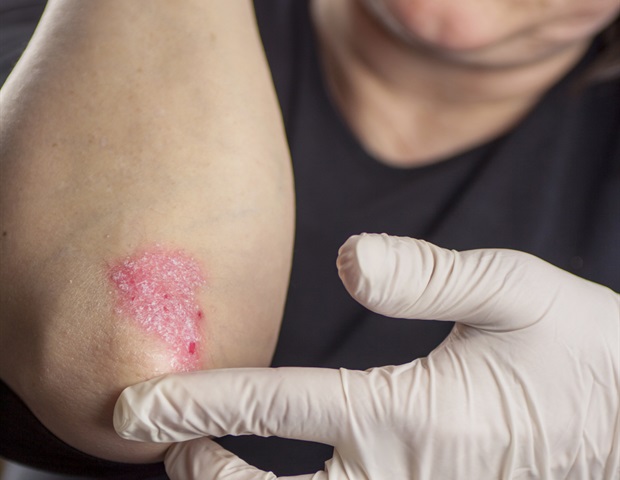For decades, people with psoriasis have been treated in clinics with narrowband ultraviolet B phototherapy, or light therapy, to reduce sores, scales, and inflammation. Now, new research from the Perelman School of Medicine at the University of Pennsylvania shows that patients can improve their psoriasis just as well at home with phototherapy devices designed to make treatment easy to self-administer. Results of the LITE study (Light Treatment Effectiveness study), published in JAMA Dermatology, found that 60% of patients who followed the recommended light therapy course twice a week at home or in a clinic had clear or mostly clear skin after 12 weeks of treatment. But patients who received at-home treatment were more likely to adhere to the prescribed treatment and were able to do so more easily than getting treatment in a doctor’s office, which brings costs for both time and travel.
Our research should influence clinical practice right away. Many insurance companies cover at home phototherapy but make it very difficult to obtain coverage causing long delays when patients need treatment immediately. Insurance companies should make the approval process easier for this treatment, and dermatology providers should prescribe home phototherapy for management of psoriasis when medically appropriate and when preferred by their patients.”
Joel Gelfand, MD, lead author, the James J. Leyden, M.D. Endowed Professor in Clinical Investigation in the Department of Dermatology at Penn and medical director of Penn’s Psoriasis and Phototherapy Treatment Center
Phototherapy is provided by machines that resemble tanning beds or that can be smaller devices for hands or feet, but they emit a specific wavelength of ultraviolet light that treats psoriasis effectively without exposing patients to the cancer-causing wavelengths that are found in commercial tanning beds. Phototherapy is often used in combination with pills and biologic therapies for psoriasis (12% of patients were taking these medications during the LITE study).
Compliance with phototherapy at clinics can be challenging
The study included 783 people, ages 12 and up, who had plaque or guttate psoriasis. Participants’ psoriasis symptoms were assessed at regular visits with their dermatologists and then randomly assigned to receive 12 weeks of at–home nbUVB or in-clinic nbUVB treatment followed by a 12-week observation period. Those who conducted phototherapy at home were provided with machines, taught how to use them, and given specific prescriptions based on the color of their skin and sensitivity to sunburn. After 12 weeks, 33% of home patients and 26% of in–office patients showed clear or almost clear skin. Among both at-home and in-clinic patients who were able to maintain the twice-per-week treatments, about 60% achieved clear or almost clear skin. Patients receiving home phototherapy were more than 3 times more likely than those going to a clinic to be able to maintain the recommended treatment frequency. None of the participants had to discontinue their participation in the study due to adverse side effects.
“Medications to treat psoriasis have a risk of side effects including increased risk of infection. Some patients prefer medication-free treatment,” said Gelfand. “Our study is important because it increases the options available to both clinicians and patients and gives patients the power to pursue treatment that best fits their needs and preferences.”
Representative research
“Whether you have very fair skin or very darkly pigmented skin, we found no difference in effectiveness of phototherapy at home or in a physician’s office except that patients in general did better at home because they were able to receive treatment more consistently,” said Gelfand.
The study was supported by the Patient-Centered Outcomes Research Institute (PCORI). The Daavlin Company provided home phototherapy machines and shipped the machines to and from patients’ homes at no cost to the patients.
Source:
Journal reference:
Gelfand, J. M., et al. (2024). Home- vs Office-Based Narrowband UV-B Phototherapy for Patients With Psoriasis. JAMA Dermatology. doi.org/10.1001/jamadermatol.2024.3897.
